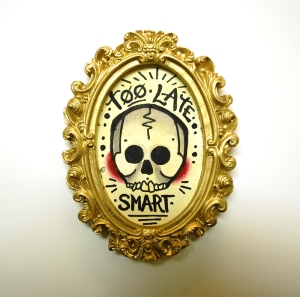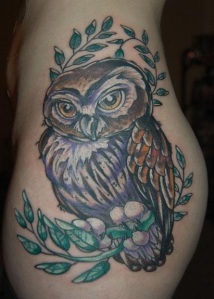is your art good enough to sell online?
Short answer? Yes.
Long, realistic answer?
Putting your art up online is kind of like showing it in a gallery. You may not be the best at your particular art style, but if you want to improve, showing the internet what you are doing is a good way to get better. There are so many skill levels, so many ways of expressing yourself; the internet is home to them all.
If you’re really timid, start slow. Use deviantart, and request critiques. Once you feel like you can handle more harsh views, try some art forums, and ask for opinions.
Or, alternately, you can dive right in. We all start where we are. Try to get very good pictures of your work. never upload giant files; upload files that are just big enough to look good on a monitor, no larger. Image theft is common, and sometimes unintentional. If you watermark unobtrusively, and only upload smaller files, you’ll find more people credit you when reposting or sharing your work. You want people to do that, because that is how you will sell your art online.
Etsy is a good starter for artists. It’s not the best venue for fine art, but it can be a good way to get your feet wet. Be cautious, though, as most of the advice on using etsy is not written with art in mind, but easily-reproducible craft. Your painting can’t be tagged and posted the same way a t-shirt can. This is why etsy is only a starter site.
The Craftstar has a decent art section, but you will have to have a paypal and pay for listing in advance.
You could also opt for one of the other sites geared for art sales- originals are harder to sell most places than prints, but it IS possible to sell just originals online.
If you are just starting out, keep your prices as low as possible. Once you are selling your work on a regular basis, then you can raise your prices. At first, it’s unknown if you will succeed or not. Most people not only buy art for its look, for how it grabs the eye, but also for the artist’s longevity, their name, their history. Build your history a little!
It’s the internet. You should maintain privacy for your own comfort and safety of course-but letting people get to know you, talking about deep or personal things, lets the viewer understand the origin of your works, and become more invested in them. Give them a chance to find out where the art came from. You can be a cantankerous bitch hermit like me and STILL be capable of showing your inner self online. You don’t have to be outgoing to do it; you can talk as if the site was your own art journal, your own notes about each piece.
So- yeah. Your art is good enough to sell online- at etsy or anywhere else. Keep your expectations of sales low at first, and your prices the same, and then as time passes you will see how your work can fit into the greater whole of online art.
And if you need encouragement, ask for it. And if you need a slap on the wrist, or a sound drubbing, you should ask for that too. All the help you could ever want from other artists lives inside your computer, but it can only do you good if you put your own work in there too.






